What’s The Scariest Element Of Horror Film?
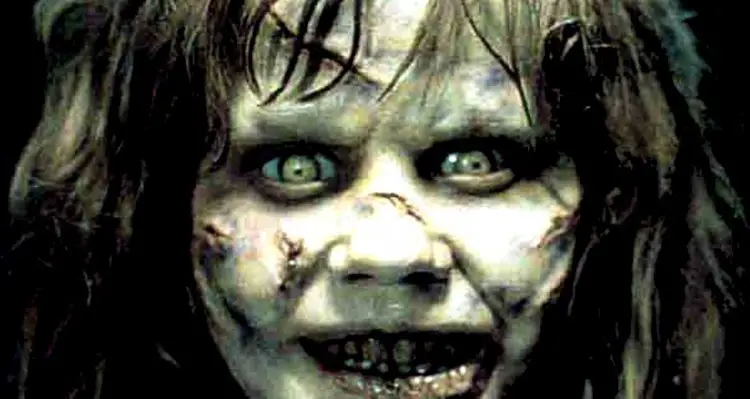
Kim is an editor and contributor for FilmInquiry. As a…
Every year horror film enthusiasts unite to watch their favorite scary films. New movies come out around Halloween season, endlessly trying to be more graphic and push the shock factor a little further. But what is it about these films that keep us wanting more? Why do we flock to the screen when Halloween comes on television, or bury our heads in the pillow whenever Freddy Kruger taps his claws on a metal pipe?
Each month, the team of Film Inquiry is posed a film-related question, and this month we wanted to celebrate Halloween, and horror film. Allow them to amuse you with their ideas of the scariest element of a horror film, and which movie that contained that element was the scariest.
Happy Lee Del Canto – Anything Demonic
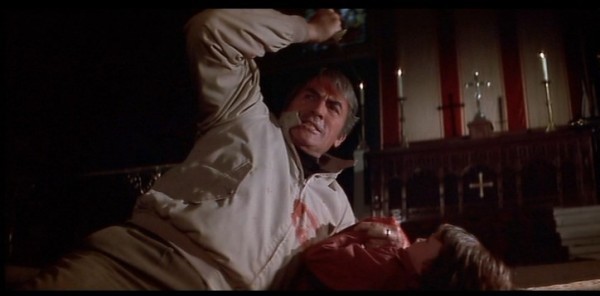
Anything demonic scares the heck out of me. Possessed dolls, possessed people, insinuation of evil. I imagine what it must have been like for the folks who went to see The Exorcist in the early 70’s. Nothing remotely similar had ever been done before. It must have shocked them senseless! Because of what a fraidy-cat I am, I avoid films like The Conjuring (I refuse to watch it) and now in theaters, Annabelle. But well-made suspense like the original The Omen (1976) with Gregory Peck and Lee Remick are pretty scary but a kind of terror that is more intriguing than just plain horror. Tasteful, gripping suspense I’d call it. In my mind, The Omen is one of the finest horror/suspense films ever made.
Alistair Ryder – The Unexpectedly Uncomfortable
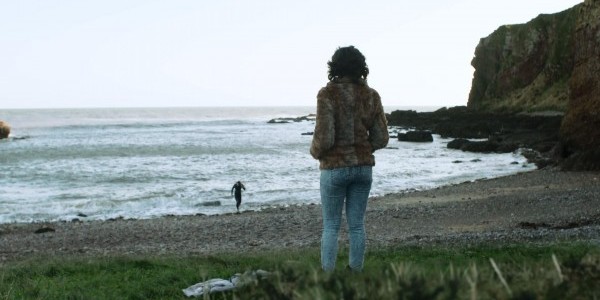
I’m not going to try and hide it – I’m a massive wimp. Yet I am almost never scared by horror movies; I go into watching them knowing it’s going to be scary and for me knowing something is going to be scary automatically kills off the joy of being scared. This isn’t to say I don’t like horror movies (I really, really do), but I’m just the guy in the cinema who laughs when the entire audience loses their shit at a jump scare that was heavily signposted. The thing that terrifies me the most is when scary moments appear in films that aren’t categorized as horror; as with the most effective scares, they creep up on you out of nowhere when you’re least expecting them.
And I don’t mean jump scares either – the longer the scene lasts, the more it will terrify me as it envelops itself around my eyeballs, all but daring me to look away from the horrors onscreen. A good recent example of this would be in Under the Skin during an early scene where Scarlett Johansson‘s alien is on a beach watching a bunch of innocent people drown. The length of the scene (it goes on for about five minutes – director Jonathan Glazer’s original edit of the film had the scene lasting for sixteen), as well as the lack of any orchestral score makes it uncomfortable viewing.
The fact that it then cuts to another seemingly endless shot of a helpless baby about to drown, crying in agony with nobody there to save him, makes it an excruciatingly horrifying watch. It’s not a horror movie, yet it’s far more horrifying than anything else I’ve seen recently; the current state of horror movies is either remakes, found footage, or James Wan-produced films that rip off horror movies from forty years ago for audiences who don’t actually like horror movies (actual horror fans should be pissed off at how shamelessly Wan rips off horror classics). It’s no wonder I’m relying on weird movies like Under the Skin to terrify me.
David Fontana – The Hidden Element
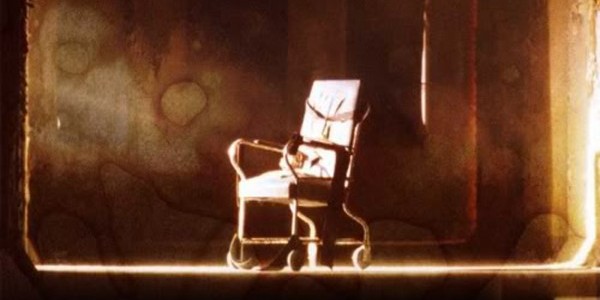
I would have to say that what tends to scare me the most in horror movies is what the movies don’t show. A lot of horror franchises, like the Saw series, the Insidious films, or any number of others, try to scare you mostly by grossing you out or by giving plenty of jump scares, which momentarily shock the viewer. But in the end, it is just that: momentary. Although it might unsettle you at that precise moment, it really does nothing to leave a lasting impression.
Chris Worrall – Slow-Building Tension
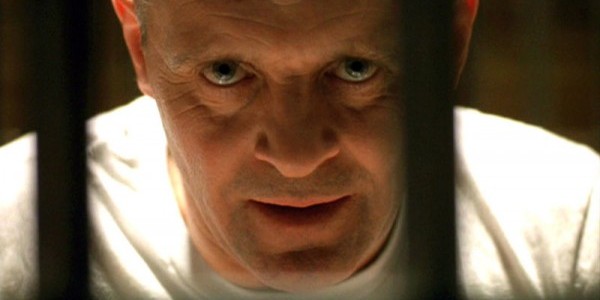
While most cinemas are packed with what has become known as ‘cattle-prod horror,’ the true horror classics creep under the skin because they rely on slow-building tension that chills you to the core. A key example springs to mind that mastered the slow suspense of true horror: the ending sequence from Silence of the Lambs where the viewer looks through the eyes of the killer in the pitch-black as he is stalking Clarice Starling. The POV technique is scary enough, but what the film does so well is take its delightful time letting the audience writhe in unpleasant anticipation. Blood, gore, and spooks all entertain when done well, but it is this that stays with you the longest after the film has concluded.
Yash Bhatia – Perfectly Placed Sounds
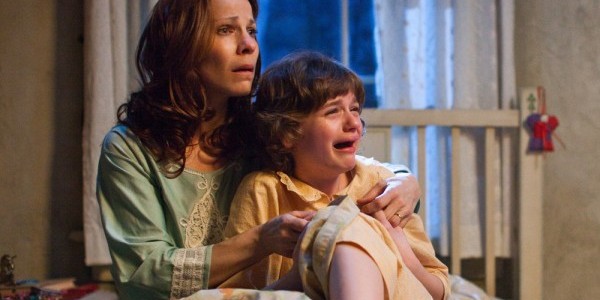
Whenever there is a discussion on this genre, I compulsively begin with the Holy Grail quote on this by the master. Mr. Alfred Hitchc*ck had rightly said, “There is no terror in the bang, only in the anticipation of it.”
This is particularly relevant today because most horror films are disgusting and sloppy instead of thrilling or scary. They up the gore and violence content and dial down on the classic horror elements. My answer to this question is: the perfectly placed sounds in a horror movie scare the hell out of me. And James Wan‘s film The Conjuring did it best.
Sitting quietly in a dark theater while the screen shows the image of a child walking down a corridor is an unnerving experience in The Conjuring, because it immediately increases the creep factor by putting the lashing of thunder against the windowpane at the perfect time. Same is the case with the cinematography: a girl checks underneath her bed for monsters and the frame goes upside down. In those beautifully crafted moments, I was scared out of my wits.
Jay Ledbetter – The Unprovoked Villain
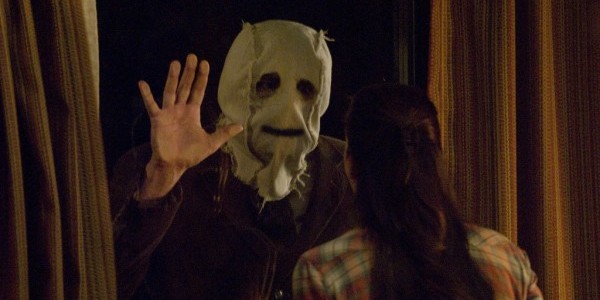
I should begin by saying that I am generally not a fan of traditional horror movies. I don’t like being scared for the sake of being scared. However, there are times that horror movies do something original or creative that can suck me in; films like The Shining and Suspiria spring to mind. But the film that has scared me more than any other is The Strangers. The Strangers stays far away from the cheap pop-out scares and manipulative smash cuts that you see in so many of today’s horror movies. Instead, the movie utilizes long takes with the terrifying antagonists looming in the background, unseen by the film’s tormented couple. The lighting in the film is terrifically executed. The terrifying hooded villains emerge from the dark so calmly and casually. They know that they are in control at all times. It is a slow burn of a horror movie, with an omnipresent threat of violence providing a refreshing reprieve from the bloody affairs of so many of its counterparts.
What scares me the most in horror movies is a villain or set of villains with no true motive. These baddies do what they do for the thrill of it. They aren’t crazy. They aren’t vengeful. Instead, they just seem to be bored. And because of this they will string their victims along, always meandering in the background, knowing they have the upper hand. Why did the hooded figures in The Strangers decide to torment their victims? “Because you were home,” they explain. That’s as scary as it gets.
Shane Bliss – Domestic Terror
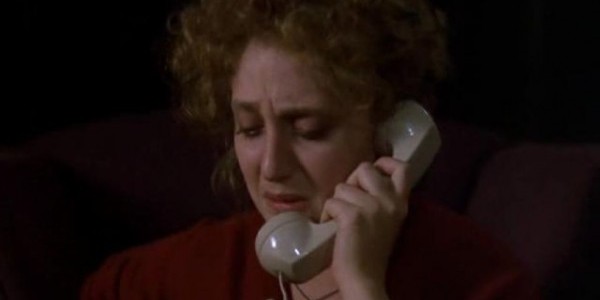
Although movies involving supernatural elements can often be frightening, there is nothing that scares me more than a horror film that involves domestic terror. These are the films that typically involve normal people facing horrific events in “safe” places like their homes. In many cases, these people are just young babysitters or teens minding their own business until someone invades a safe place.
No film captures this better than the original When A Stranger Calls. The film does drop off in quality after the opening, but the opening 20 minutes are some of the most terrifying moments in film history. As the babysitter continues to receive menacing phone calls, the terror gets ratcheted up because of the domestic setting. Every dark corner of a normal house is possibly dangerous. The tension is such that even showing the phone when it’s not ringing adds to the suspense.
It works because it is domestic and realistic. Horror films like that connect to us because these are situations we could find ourselves. These are the films that stick with you, and make you a little uneasy when you’re alone in the dark.
Jeff Peterson – Being Blindsided
![[REC] - source: Filmax International](https://www.filminquiry.com/wp-content/uploads/2014/10/rec.jpg)
To a large degree, I think it’s because the whole concept of horror – a safe environment to explore things that scare us – hinges on very specific conventions. Just going into a horror movie, you already kind of know what it will entail, at least in broad terms. There’s a contract between filmmaker and audience – certain people are, generally speaking, safe; certain elements will or won’t make an appearance, depending on the subgenre; and due partially to the limitations of the medium, everything basically boils down to a question of physical pain and how much of it characters will endure before they either do or don’t die. Even when movies do try to diverge from the formula, they do it in pretty predictable ways.
Frankly, one of the scariest things I’ve seen recently was from an episode of Game of Thrones – the big Season 4 duel, for those of you who have watched it. George R.R. Martin and Co. have a reputation for messing with audiences, but this one still took me by surprise and, actually, left me kind of shaken. Fantasy doesn’t have the same kinds of expectations, and I felt like Game of Thrones had, for a brief, jarring moment, violated its contract with the audience in terms of how it dealt with a character who, one episode before, seemed to have been set up as the closest thing in the series to a clear-cut hero.
So, for lack of a better way to explain it, I’d say the only thing that can still scare me in horror is being completely blindsided by something. It’s a tall order for a genre so based in cliché. [Rec] is perhaps the best example of how to do it, though. What could have just been a really solid found-footage outbreak movie completely changes direction in the last 20 minutes with one of the best horror movie endings ever put on film, in my opinion. Still didn’t freak me out the way Audition did all those years ago, but it was a nice reminder of how it feels to not know what to expect next.
Kim Gamble – Childhood Fears
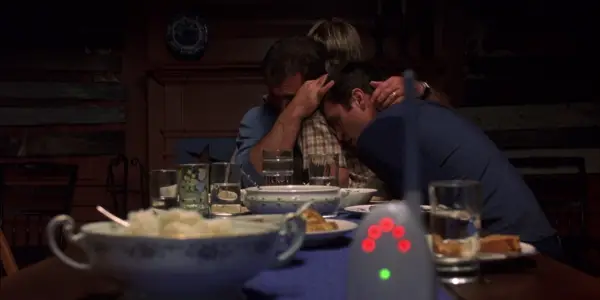
Monkeys and aliens. These are my two biggest fears from childhood. Scary movies themselves usually don’t bother me. Sure, the occasional jump scare will have me screaming, but it quickly wears off. A frightening face here and there will stick with me for a while, too. (One of my favorites for its haunting images is Grave Encounters.)
But my (maybe irrational) fear of monkeys and aliens thrives above all else. I saw a movie when I was very young called Monkey Shines. My mom and dad wouldn’t let me watch it with them, so I remember sitting at the top of the stairs, hiding so they didn’t know I was there! But that night, I had to crawl into bed with them because of the scary tiny monkey and his evil little face!!
After trying to watch that film now, I laugh because it’s such a terrible, slow-moving story. But that killer monkey will stick with me for life. I had trouble watching the newest Dawn of the Planet of the Apes because of Koba. I shiver at the thought of him holding a rifle.
My other fear – aliens – I’m pretty sure spawned from watching the X-Files at a young age. My dad usually had on all the scary shows and movies, and they intrigued me even more because I wasn’t “allowed” to watch them. Signs was especially unnerving because it brought to fruition one of my biggest worries as a child – what would happen if the earth was invaded? The first time I watched the scene where the local news played the amateur video from a children’s birthday party, I must have jumped ten feet. My fiancé thinks I’m nuts, but Signs scared me more than most other films when I first saw it in theaters because it seemed so real.
Does content like this matter to you?
Become a Member and support film journalism. Unlock access to all of Film Inquiry`s great articles. Join a community of like-minded readers who are passionate about cinema - get access to our private members Network, give back to independent filmmakers, and more.
Kim is an editor and contributor for FilmInquiry. As a movie nerd from Buffalo, NY, her passion for film and t.v. motivates her enjoyment of reading and writing. She hopes to polish her style and publish original, thought-provoking articles about some of her favorite and not-so-favorite films. Thanks for reading!













